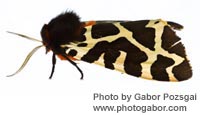Introduction
 This page has been mothballed.
This page has been mothballed.
It is no longer being updated but we've left it here for reference.
The origins of the Current position
The origins of the current position of this project (to create a digital, high resolution, map related image of the entire land area of Scotland) stem from work around the proposed update of the Land Cover of Scotland 1988 (LCS88).
- A review of aerial photography provision in Scotland identified two themes:
- the uneven coverage of the country (see Figure 2);
- the duplication of data by organisations under the Scottish Executive umbrella.
This work led to the view that aerial photography is a key shared resource and would benefit from improved management. Currently data duplication is due to agency and departmental ignorance about who holds publicly funded data and the specification details.
- Consultation with Land Cover Of Scotland 1988 users via workshops, reports, interest groups concluded that:
- The 1988 AP (and LCS88) had a wider range of users and user organizations than was originally anticipated and that the future user base could be wider still.
- Aerial photography is the most suitable data format for the derivation of information on land cover;
- Improved technology associated with aerial photography (ortho-rectified digital imagery) allows this key resource to add direct value to digital mapping and other digital geo-referenced data sets in use by many Scottish Office departments;
- The user groups have their specific interests that are reflect in their own land cover definitions, classification scheme, scales, etc. (e.g. Scottish Natural Heritage, the Forestry Commission; classes, scales, mapping units, cover definitions). When the users were canvassed, the over-riding theme was a desire to have access to the original AP data, preferably in a rectified and digital format.
- The pattern for any repeat will not be the same. There is a perception that currently we lack the expertise, the time and the finance to do an exact repeat of the original LCS. A repeat of the LCS methodology (13 photo interpreters, manually interpreting the land cover through stereo pairs followed digital transfer onto a basemap, etc.) would not be funded. Currently (SE) funded land cover change detection research is looking at automated mapping and land cover change detection (e.g. SYMOLAC). To this end there is a considerable body of expertise being developed at MLURI to tackle automated land cover mapping and land cover change detection (e.g. SYMOLAC). Automated methods require digital, geospatially accurate data. If the way forward for a new LCS is by using AP, then by implication this will be digitized (or digital) and ortho-rectified.
- A steering group for the new LCS project was created that identified the critical organisational and technical issues to be resolved. The minutes and agendas from the steering group meetings can be viewed.
Summary
From these steps it has been concluded that a national map accurate digital image base would enable a national land cover mapping exercise and a range of other applications.
- Wider user base than anticipated;
- Users have their own specifications and want to see the data underlies any interpretation;
- The historical pattern of AP acquisition in Scotland has favored the Central Belt area;
- No centralized co-ordination of publicly funded data results in data duplication (FC, local SNH projects, MLURI, OS);
- No indication of funding for a repeat LCS – manual API etc.;
- Increased funding for automated change detection that would require the digitisation and rectification of AP data;
- Current position determined by steering group for the new LCS.

